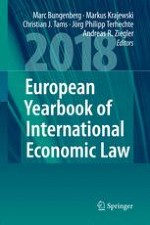
2019 | OriginalPaper | Buchkapitel
The Role of Sustainable Development in Natural Resources Law
verfasst von : Maximilian Oehl
Erschienen in: European Yearbook of International Economic Law 2018
Verlag: Springer International Publishing
Aktivieren Sie unsere intelligente Suche, um passende Fachinhalte oder Patente zu finden.
Wählen Sie Textabschnitte aus um mit Künstlicher Intelligenz passenden Patente zu finden. powered by
Markieren Sie Textabschnitte, um KI-gestützt weitere passende Inhalte zu finden. powered by